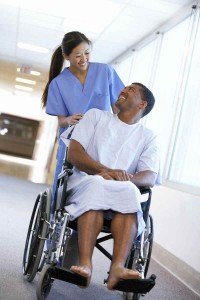
A condition where certain muscles are continuously contracted. This causes stiffness or tightness of the muscles and may interfere with movement, speech and gait. Spasticity is generally caused by damage to the part of the brain or spinal cord that controls voluntary movement.
Many muscles in the human body work as opposing pairs, like the biceps and triceps. When one contracts the other is relaxed. The regulation of these muscles is complex and involves sending information to the muscles and receiving sensory information feedback from them.
In spasticity, this control goes wrong, and both muscles try to contract at the same time. This can lead to the affected limb locking in place with painful muscle cramps developing.
Spasticity in Multiple Sclerosis
Spasticity is a very common problem in MS. It often affects the legs although it can affect almost any muscle pair in the body. Clonus (repetitive muscle spasms) is often associated it.
I have found that this spasticity manifests as severe cramps when I adopt an unusual posture. In the past I was, foolishly, attempting to assist with the home decoration and knelt down to scrape off some wallpaper. After only a few moments the cramp began and moving to a sitting position was urgently required. I could not stand, I could barely move. I had to roll over onto my back and relax for many minutes before the cramp eased and I could crawl back into my chair.
Beyond this, I recall using the term “Spastic” as a form of extreme verbal abuse as a child. As children we had seen poor, unfortunate children with serious disabilities and mobility and speech difficulties; we did not, could not understand how this came to be. Of course, as children, we used this as an indication of stupidity. If you were seen to do something silly you were immediately called a spastic.
I am ashamed to recall those days and my ignorance and lack of empathy. But, that is all part of growing up.
Common Causes
- adrenoleukodystrophy
- amyotrophic lateral sclerosis (ALS)
- spinal cord injury
- multiple sclerosis
- cerebral palsy
- brain trauma
- head injury
- phenylketonuria
Treatments
Medications may include:
- baclofen
- diazepam
- tizanidine
- clonazepam
- dantrolene
Physical therapy may include muscle stretching and a range of exercises to help prevent shrinkage or shortening of muscles.
References:
Multiple Sclerosis Encyclopaedia
National Institute of Neurologocal Disorders
